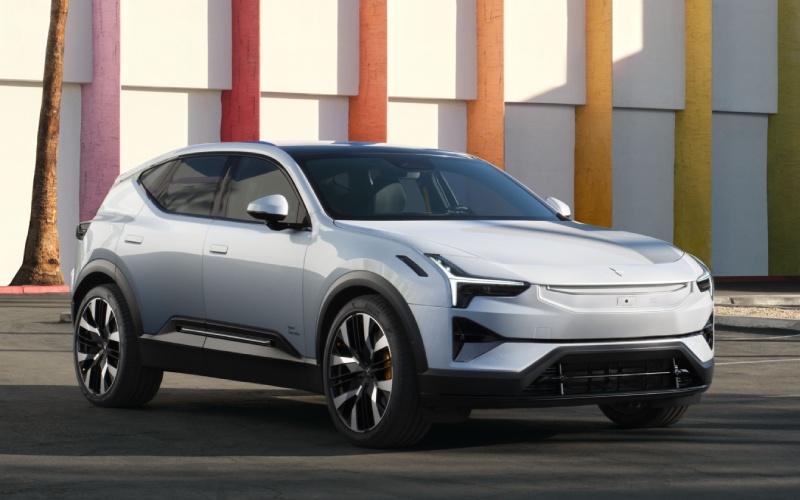
Polestar Scottsdale - Which Electric SUV is Better for Daily Driving in Scottsdale, AZ — Polestar 3 or Audi Q8 e-tron?
Shoppers often ask one practical question when cross-shopping these two luxury EVs: which one truly makes daily life easier and more enjoyable? Both bring quiet cabins and upscale appointments, but their core philosophies diverge. The Polestar 3 pairs a driver-focused chassis and Brembo performance brakes with dual-chamber active air suspension on dual-motor trims, then layers Google built-in for effortless, native navigation and voice control. The Audi Q8 e-tron emphasizes classic luxury and comfort, with a familiar MMI interface and a composed highway ride. If your routine blends school runs, commutes, and frequent errands with the occasional weekend getaway, the Polestar 3’s systems are tuned to reduce effort and add confidence in more moments.
Inside the Polestar 3, the 14.5-inch center display runs Android Automotive OS with Google built-in, so Google Maps handles battery-smart route planning and stations with live updates while Google Assistant enables natural voice control for climate, calls, and media. With the available Plus pack, the Bowers & Wilkins system brings 1,610 watts, 25 speakers, Dolby Atmos, and Abbey Road Studios Mode—an audiophile-grade experience that keeps conversations clear and fatigue low. CleanZone® with the Advanced Air Cleaner detects and filters PM2.5 particulates, and interior ambience combines a full-length panoramic roof with white or Swedish gold lighting for calm clarity. The Audi Q8 e-tron counters with a well-appointed interior and available Bang & Olufsen 3D audio, but it does not offer the same 25-speaker architecture, headrest speakers, or the PM2.5-anchored CleanZone approach.
- Daily usability highlights: Polestar 3 enables full one-pedal drive for smoother stop-and-go; Q8 e-tron’s regen is not tuned for true one-pedal operation.
- Smart navigation: Polestar 3’s Google Maps includes battery-aware routing and app-level OTA updates; Q8 e-tron offers an app store but lacks native Google built-in.
- Charging convenience: Polestar 3 peaks at 250 kW DC for faster top-ups on compatible chargers; Q8 e-tron peaks at 170 kW DC.
- Safety vigilance: Polestar 3 adds infrared Driver Monitoring and interior radars for occupant detection; Q8 e-tron does not match this interior sensing set.
- Road feel: Polestar 3 dual-motor variants add true rear-axle torque vectoring; Q8 e-tron relies on brake-based management and AWD calibration.
Range and recharge speed can define weekday flexibility. Polestar 3 is EPA-estimated up to 350 miles in Long range Single motor form, and 10-80% DC fast charging can take about 30 minutes under ideal conditions thanks to a 250 kW peak. The Audi Q8 e-tron Sportback can reach up to an estimated 296-300 miles depending on configuration, with a 170 kW DC peak. When time is tight and plans change, the Polestar’s higher charging ceiling and efficient route planning tools reduce uncertainty—and that usability advantage compounds over months of ownership.
Driver confidence also separates the two. In the Polestar 3, dual-motor models with active air suspension maintain poise on choppy surfaces and settle quickly after big inputs, while true rear-axle torque vectoring helps the car rotate cleanly into corners. On a twisty cut-through or a freeway cloverleaf, the steering and chassis responses feel precise rather than soft, yet the ride remains calm. The Q8 e-tron is serene and steady, but it lacks the same vectoring hardware and one-pedal finesse that simplify real-world maneuvering. Over time, those small differences show up in smoother parking, lighter traffic work, and a more connected feeling on familiar roads.
Safety vigilance in daily life includes what the vehicle sees forward and what it notices inside the cabin. Polestar 3’s SmartZone™ houses forward cameras, sensors, and a heated radar, and the interior features infrared Driver Monitoring plus four child-and-pet-sensitive radars for its Occupant Detection System. These technologies work without storing images, but they add meaningful layers of protection in unplanned moments. The Audi’s suite is robust with collision avoidance and lane support, yet it does not add the same interior radar coverage or IR-based eye tracking.
For shoppers evaluating both, the more you consider day-to-day routines—short errands, tight parking, late pickups, fast top-ups—the more the Polestar 3’s strengths add up. Polestar Scottsdale stands ready to help you test each setup and dive into options so you can choose the configuration that fits your life, serving Scottsdale, Paradise Valley, and Phoenix with guidance that goes beyond spec sheets.
Frequently Asked Questions:
Can I use true one-pedal driving in both SUVs?
Polestar 3 offers full one-pedal drive capability, ideal for traffic and hill work. The Q8 e-tron’s regenerative braking is not calibrated for true one-pedal operation.
How do the charging peaks compare for quick top-ups?
Polestar 3 supports up to 250 kW DC on compatible stations, helping reduce dwell times on road trips. The Q8 e-tron peaks at 170 kW DC.
What’s the biggest difference I’ll feel on a test drive?
In Polestar 3 dual-motor models, the combination of dual-chamber active air suspension and true rear-axle torque vectoring produces crisp responses with a settled ride. The Q8 e-tron is composed and quiet but less eager in transitions.